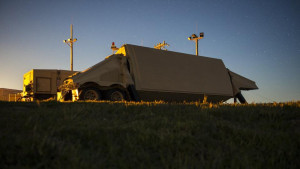
The revision of the initial decision to deploy THAAD on the Seongsan anti-aircraft missile base was driven by mass protests of the population and security concerns. Representatives of the ROK’s National Defense Ministry and civil experts identified three alternative locations and finally picked the golf course.
Reportedly, the golf course meets all six criteria established by the Ministry of National Defense: operational availability, safety of the population, equipment and operation, distance from residential areas, cost of construction and the time required to prepare the site for the deployment of the system. Since there are few residential facilities close to the site, the dispute over the potentially harmful effect of radiation emitted by the radar should not be too heated. Another advantage of the new site is its location at high altitude.
The US is urging ROK not to linger with the deployment of THAAD in the face of allegedly growing Pyongyang nuclear threat. ROK’s government and especially its military forces are eager to speed up the process to have the deal settled before the next ROK’s administration takes office at the end of February 2018.
However, the residents of the nearby Gimcheon, who have already demanded that the Ministry of Defense give an account of the decision-making procedure, are likely to launch protests. Though ROK Minister of National Defense Han Min-koo and Deputy National Defense Minister Hwang In-Moo met with representatives of the Parliament, Governor of North Gyeongsang Province and other local authorities to explain their decision, while the Governor of North Gyeongsang Kim Kwan-yong and Seongju governor Kim Hang-kon were reluctant to publicly announce the official stance on the issue in view of protests of the local residents. Meanwhile, a local anti-THAAD Committee vowed to continue protests by efforts of all concerned parties.
Adepts of Won Buddhism are also contesting the decisions taken by the military officials since they consider the area, which begins just some 500 meters away from the golf course, a sacred place.
There is also an issue of ownership since the golf course is a privately owned property. Besides, Lotte, the company that owns the golf course, would prefer to have “a clean record” fearing that China might hamper the promotion of its products and services on the very important Chinese market.
Ultimately, for the decision to be implemented, it has to be approved by the National Assembly since all expenses will be paid from the country’s budget. The Parliament, which is dominated by the opposition, is unwilling to take any steps until the issue is debated.
As for the position of the South Korean population, according to the results of a telephone survey conducted on August 16-18 by the Research & Research Agency at the order of the Institute of Asian Research, 53.6% of 1 thousand surveyed ROK citizens believe that the country would benefit from the presence of THAAD. 36.3% of respondents opposed this opinion. 53.5% of participants believe that the government’s decision to deploy THAAD was taken as a response to the North Korean missile threat, while 38% think that by approving this decision, ROK had integrated into the American missile defense system.
Researchers also collected data demonstrating why exactly the respondents voted in favor or against the deployment of THAAD. Among those voting in support of THAAD, 69.9% said that their position is motivated by the North Korean missile and nuclear threat. 12.9% justified their decision by the need to strengthen the US-ROK alliance. 7.8% said that by voting in favor of the deployment, they showed their confidence in the government and its decision. 42.4% of the opponents of THAAD said that their decision was driven by a distrust in the credibility of the government. 19.3% said that they believed the decision would undermine the country’s relations with China. 16.3% voiced their concerns over personal security, including harmful effect of the electromagnetic radiation emitted by the radar. 13.4% did not believe that Pyongyang would launch a missile attack.
When speaking about possible consequences of the decision, 71.8% of the respondents said that China was likely to take retaliatory economic measures (they also noted China’s excessive demands). Seoul, however, is not losing hope to resolve the situation. On September 6, Vice Minister for Foreign Affairs of the Republic of Korea Lim Sung-nam said that ROK and China were considering the creation of a channel for a more detailed discussion of the issue at the level of Foreign Ministers and their deputies. So far, the parties have only confirmed their common stance on the issue of the North Korean nuclear threat and have agreed to continue their dialog.
In the conclusion of the present review of the situation with THAAD, it would suffice to mention a proposal brought forward by the King Sejong Institute. In his interview to the Global Affairs, the President of the Institute noted that to resolve misunderstanding
Konstantin Asmolov, Ph.D, Chief Research Fellow of the Center for Korean Studies, Institute of Far Eastern Studies, Russian Academy of Sciences, exclusively for the online magazine “New Eastern Outlook.“
